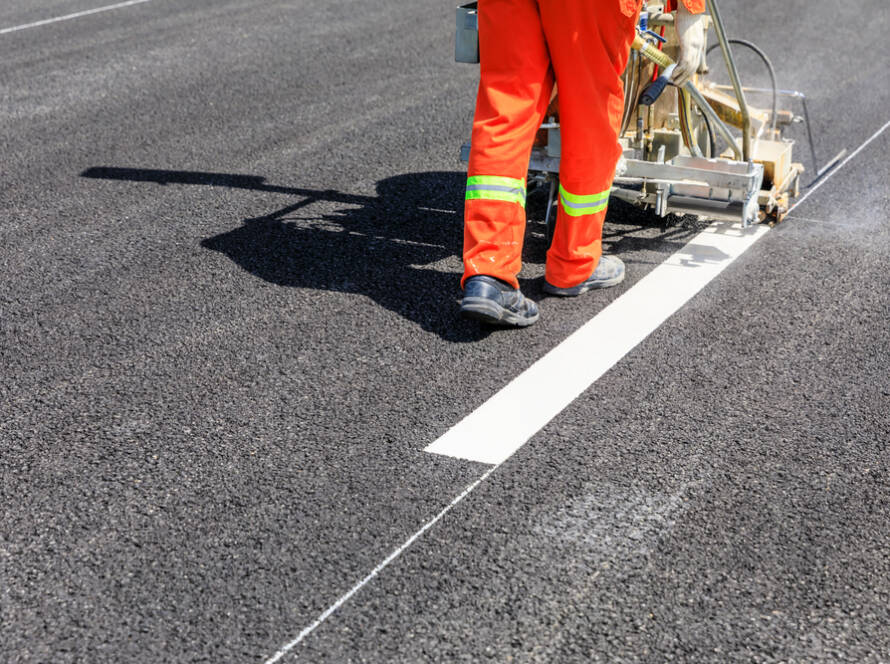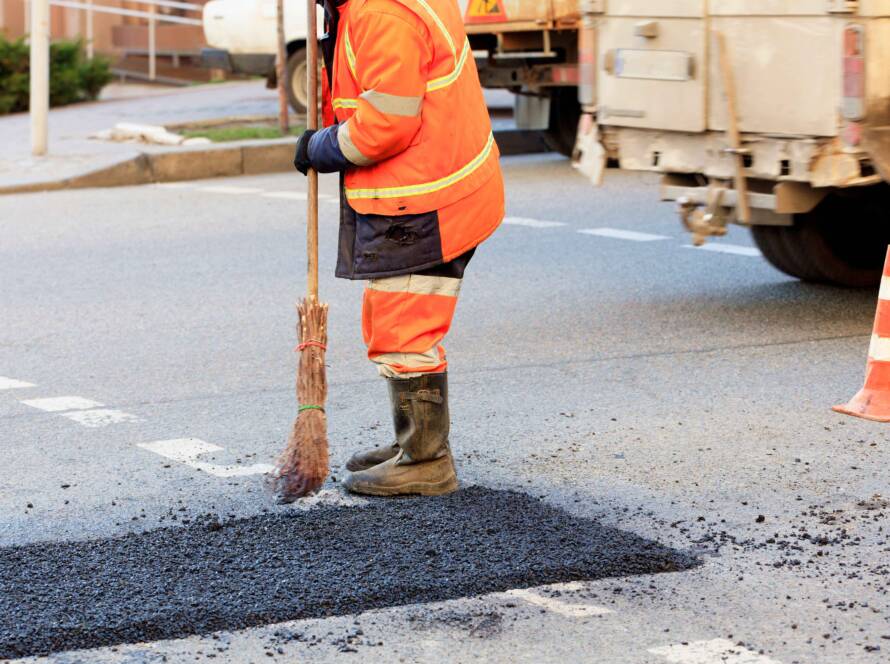Temporary vs. Permanent Repairs are two primary approaches to fixing damaged surfaces, and understanding the differences between them can significantly impact both the quality of your surface and long-term maintenance costs. Whether you’re dealing with a private driveway, public roadway, or a commercial car park, knowing when and why to choose one method over the other is essential for making informed, cost-effective decisions. In this blog, we’ll break down the five key differences between these repair methods, helping you choose the best option for your specific needs.
1. Purpose and Longevity
One of the most significant differences between Temporary vs. Permanent Repairs is their intended lifespan. Temporary repairs are designed to be a quick fix for urgent issues such as deep potholes, cracks, or surface damage that poses an immediate hazard to vehicles and pedestrians. These repairs generally last for a short period—anywhere from a few weeks to a few months—depending on factors like weather and traffic load. They are often used to mitigate safety concerns until a more permanent solution can be implemented.
In contrast, permanent repairs aim to address the underlying cause of the damage. For example, if cracks or potholes have formed due to a failing sub-base or poor drainage, permanent repairs will involve digging out the damaged area, fixing the issue at its core, and resurfacing with fresh materials like tarmac or resin surfacing. These solutions are designed to last for years, offering more durable, long-term results.
2. Materials and Techniques Used
When it comes to Temporary vs. Permanent Repairs, the materials and techniques used differ significantly.
Temporary Repairs
Temporary repairs usually involve cold patching materials. These materials are quick-drying, easy to apply, and ideal for emergency situations. Cold patch is a versatile solution for temporary fixes, as it doesn’t require high temperatures or specialized equipment to apply. This makes it a practical option for quick repairs in adverse weather conditions, such as cold or wet days, when hot mix asphalt is not feasible.
While cold patch is effective for an immediate fix, it typically lacks the durability and structural integrity needed for long-term use. Over time, these temporary patches can loosen, crack, or shift, leading to the need for further repairs.
Permanent Repairs
For permanent repairs, the materials used are much more robust. Hot mix asphalt is commonly used for resurfacing roads and driveways, as it is durable and bonds seamlessly with the existing surface. Hot mix asphalt is created by heating asphalt and combining it with aggregate to create a smooth, long-lasting solution.
Another increasingly popular option for permanent repairs is resin surfacing. Resin-bound surfacing involves mixing natural aggregates with a resin binder to create a durable and aesthetically pleasing surface. Resin surfacing offers superior performance, excellent weather resistance, and a variety of design options. It is ideal for both residential and commercial projects where longevity and appearance matter.
3. Cost Implications
While Temporary vs. Permanent Repairs may seem similar in terms of cost, the long-term financial implications are very different.
Temporary Repairs
At first glance, temporary repairs are usually the cheaper option. The materials and labor required for temporary fixes are less expensive, and the repairs can be completed relatively quickly. However, these savings are often short-lived. Temporary repairs are not designed to last, and as the surface begins to deteriorate again, further repairs will be needed. In some cases, repeated temporary fixes can cost more over time than a permanent repair would have in the first place.
Permanent Repairs
Although permanent repairs are more expensive initially, they offer better value over time. By addressing the root cause of the damage and using higher-quality materials such as tarmac or resin, permanent repairs reduce the need for frequent maintenance. Over the years, the cost of regular temporary repairs can add up, whereas a single, well-executed permanent repair can extend the lifespan of your surface for many years, ultimately saving you money in the long run.

4. Weather and Timing Factors
The timing of repairs plays a significant role in the choice between temporary and permanent solutions.
Temporary Repairs
One of the advantages of temporary repairs is that they can be carried out under less-than-ideal conditions. Cold patch materials, for example, don’t require perfect weather to apply, making them a practical solution during rainy or cold seasons. If immediate action is required to ensure safety, temporary fixes can be applied quickly, even in poor weather conditions.
Permanent Repairs
Permanent repairs, however, require more precise timing. Hot mix asphalt and resin surfacing need warm, dry conditions to cure properly, ensuring a strong bond with the existing surface. Performing these repairs during wet or extremely cold weather can lead to issues with the curing process, affecting the overall durability of the repair. For best results, permanent repairs should be scheduled during mild, dry conditions, and depending on the region, this may limit when repairs can be done.
5. Safety and Liability
Another crucial factor to consider when deciding between Temporary vs. Permanent Repairs is safety and liability.
Temporary Repairs
While temporary repairs may address immediate safety concerns, such as filling potholes or patching cracks, they don’t always provide a stable long-term solution. Over time, temporary fixes can deteriorate, leading to further damage or creating new hazards. As the patching material breaks down, it can create an uneven surface, which may become a trip hazard or cause vehicle damage. This increases the risk of accidents and can result in costly liability issues for property owners.
Permanent Repairs
On the other hand, permanent repairs offer a smoother, more durable surface, reducing the likelihood of future accidents or damage. By addressing the underlying issues, such as drainage problems or structural flaws, permanent repairs ensure a more stable surface over the long term. This minimizes the risk of legal claims, reduces liability for property owners, and contributes to overall safety for vehicles and pedestrians.
Conclusion: Choose Wisely to Save Long-Term
The choice between Temporary vs. Permanent Repairs isn’t just a technical decision—it’s a practical one. While temporary repairs can be effective in emergencies or for quick fixes, they often come with recurring costs and potential safety hazards. Permanent repairs, although more expensive initially, provide better value over time by offering durability, improved safety, and fewer maintenance needs.
If you’re unsure which repair method is right for your surface, it’s always worth consulting with a professional surfacing company like Total Surfacing Solutions. Whether you’re considering resin surfacing for a driveway or opting for a tarmac solution, the right decision today can help you avoid costly repairs tomorrow.



